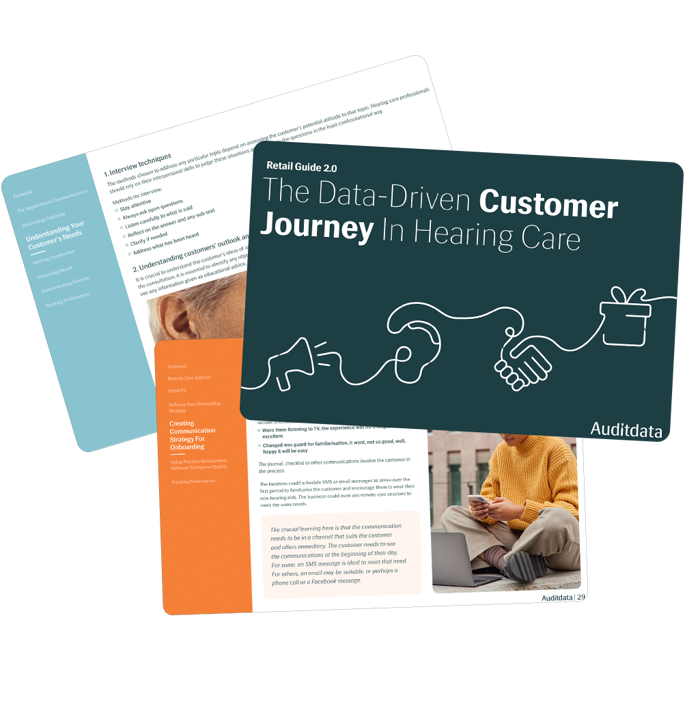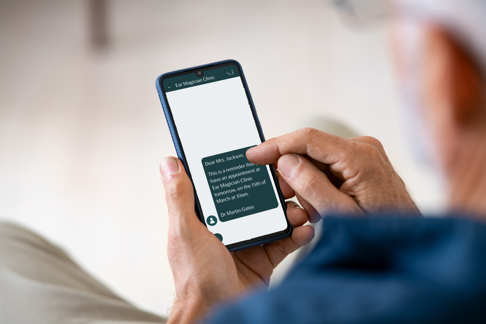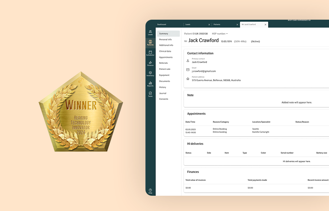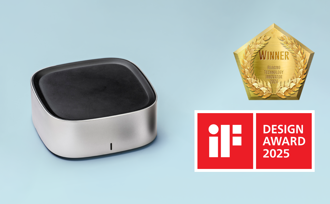
In the U.S., hearing loss is the third most common chronic physical condition – after arthritis and heart disease – with approximately 15% of American adults having some degree of hearing impairment. Yet, many with hearing loss resist getting help for the condition, with less than 16% of American adults ages 20-69 – and less than 30% of adults aged 70+ – who need a hearing aid actually using one.
In this blog, we explore the key obstacles along the U.S. hearing care journey—and the opportunities to improve access, trust, and patient outcomes
The Current State of the U.S. Healthcare System

To understand why so many people delay or avoid seeking help for their hearing loss, we need to look at the system meant to support them. Yes, perceived stigmas and denial play a role, but they’re only part of the picture.
Many patients are also discouraged by the prospect of high out-of-pocket costs, limited insurance coverage, and systemic barriers to care.
These challenges are compounded by a healthcare system that ranks among the worst-performing in the developed world. Only a third of Americans trust it, and nearly half of Americans give it a failing grade due to long wait times, difficulty getting appointments, inconvenient hours, and high costs.
Stages of the U.S. Hearing Care Journey

Understanding the full hearing care journey, from first doubts to long-term device adoption, can help you better support your patients at every step.
While you may only see a patient in the clinic, their experience starts long before they reach you, and it continues long after. By recognizing the emotional and logistical challenges at each phase, you can adapt your approach to meet patients where they are, reduce drop-off, and improve outcomes.
The journey typically includes three main stages:
Pre-Clinic: The emotional and mental build-up before someone seeks help.
Most patients wait 7–10 years from first noticing hearing loss to seeking help. Denial, stigma, cost fears, and confusion about next steps are major barriers. Your public-facing education, website clarity, and community outreach efforts matter more than you think.
In-Clinic: The diagnosis, decision, and device-fitting process.
Even when patients make it to the clinic, uncertainty doesn’t end. Anxiety around testing, or feeling overwhelmed with choices, can prevent them from following through. Empathy, clear communication, and realistic expectation-setting are key.
Aftercare: The follow-through that ensures long-term success and satisfaction.
This is where long-term success is won or lost. Without structured follow-up, patients may stop wearing their devices, struggle with fit, or feel unsupported. A proactive aftercare plan, regular check-ins, and reminder systems can drastically improve satisfaction and reduce returns.
Free Guide
Improve Every Step of the Customer Journey
Download 'The Data-Driven Customer Journey in Hearing Care' a practical guide for hearing care professionals looking to optimize the full patient experience.
From pre-visit engagement to long-term loyalty, this guide shows how to use real clinic data to improve outcomes, increase efficiency, and make smarter use of your resources—staff, marketing, equipment, and more.

Key Challenges and Solutions

Hearing care professionals operate in a healthcare landscape that can be challenging, but within your clinic, you have real opportunities to improve patient outcomes.
Below, we outline five common barriers to hearing care in the U.S., and how your clinic can help overcome them.
1. Systemic Healthcare Frustrations Create Mistrust
Long wait times, confusing processes, high costs, and inconvenient hours have eroded public trust.
Common complaints include long wait times, difficulty getting an appointment with a clinician, inconvenient hours, and non-compassionate providers. Six in ten uninsured adults in America have gone without necessary healthcare because of the cost. And approximately half of insured adults worry about the high costs of their monthly health insurance premiums, which often don’t cover all the services and treatments they need.
What Can You Do
Many believe the American healthcare system needs a major overhaul. While your clinic can’t solve the overarching systemic issues in healthcare, you can give your patients and prospects what they want. Offer convenient hours. Schedule appointments strategically to reduce wait times. Hire clinicians who have important “soft skills” like good communication, compassion, and patience. Promote your key differentiators – like short wait times and convenient hours – on your website, social media platforms, and other marketing efforts. Spotlight positive reviews and testimonials to demonstrate that other patients have had great experiences at your clinic. And “walk the walk” by fulfilling your promises. If you promise short wait times, don’t make patients sit in your waiting room for an hour before they’re seen.
2. Limited Insurance Coverage for Hearing Aids
Although some insurance policies cover the cost of hearing exams, they often won’t cover hearing aids, which is a serious problem since the devices can cost between $3,000 and $7,500, making it unaffordable for most Americans.
This purchase would represent a “catastrophic healthcare cost” for 77% of Americans with hearing loss, placing 4% of the population into poverty for the year.
What You Can Do
Some American organizations – like The Hearing Loss Association of America – provide information about assistance programs for hearing aids. AARP offers a hearing care program for members. Medicare, Medicaid, and veterans’ insurance may provide hearing aid coverage. Remind patients that insurance may cover hearing aids completely in certain situations, like a birth defect or sudden trauma. Coverage depends on patients’ specific insurance program, plan, and state, and some insurers provide partial coverage through deductibles, discounts, or other programs.
Your staff should offer to help patients navigate the complexities of insurance coverage and reimbursement, which is overwhelming and intimidating for many people to tackle on their own. Additionally, the U.S. Food and Drug Administration (FDA) rule allows manufacturers to sell hearing aids over the counter (OTC), and some of these OTC devices may have lower prices that might be more feasible for people on tight budgets. When meeting with each patient, ask them about their budget, and be respectful of their financial circumstances. Explain that your clinic offers hearing aids at a variety of price points – and offers monthly payment plans – to make the devices more affordable and accessible for all. Also, proactively advocate for expanded insurance coverage for hearing care services and solutions.
3. Stigma and Denial Still Keep Patients Away
People may avoid seeing a hearing care professional, and getting hearing aids, because they don’t want to appear old, they may try to justify that their hearing “isn’t that bad,” and/or they may be preoccupied with other chronic health issues and simply not have the bandwidth to worry about their hearing loss, too.
What You Can Do
Share stories, testimonials, and educational content that highlights the benefits of early intervention. Use social media, email, and clinic displays to challenge outdated stereotypes and highlight success stories across all age groups.
Spotlight the benefits of hearing aids and work proactively to overcome people’s objections to wearing the devices. Educate people about the connections between untreated hearing loss and various mental, physical, and emotional challenges, including increased risks for dementia and brain atrophy. Promote the importance of hearing health via public education campaigns in your community. This could include giving talks at local senior centers, libraries, offices, schools, and other venues. Provide information about hearing loss and hearing health on your website, social media platforms, and through email blasts to your database.
4. Logistical and Physical Barriers to Care
For some, it may be difficult to visit a hearing clinic due to health and mobility issues, lack of transportation, living far from a clinic, etc. And, as the aging population (and age-related hearing loss) increases dramatically, the number of trained audiology professionals can’t keep pace. Lack of capacity in the audiology industry has become a significant barrier to care.
What You Can Do
Explore mobile care or “clinic-on-the-go” services for those who can’t come in. Use portable audiology equipment when possible. Consider remote consultations or hybrid care models. Even one flexible option can make a huge difference.
5. Staying Current in a Fast-Moving Industry
With rapid tech advancement such as AI, REM tools, rechargeable aids, OTC devices—it’s hard to stay on top of everything. The audiology sector is evolving rapidly, with exciting new technologies improving our equipment and patient outcomes.
Additionally, the rapid development of technology has led to advancements in hearing aids, improving patient outcomes and satisfaction. For instance, recent innovations in wireless connectivity, rechargeable hearing aids, and AI-powered devices have significantly improved the listening experience for hearing aid users.
What You Can Do
Stay current on industry happenings – even when you’re busy. Join prominent audiology organizations (like the American Academy of Audiology and the American Speech-Language-Hearing Association), following their social media platforms, reading industry publications (like The Hearing Review), participating in webinars, attending events, networking with industry peers, and continuously learning every day. These resources and activities can be effective ways to pose questions, discuss challenges, and share best practices that can help fuel your professional growth.
Other Blogs You Might Enjoy:

Improving Operational Efficiency: Why This Matters
Your hearing clinic wants to boost profitability, improve patient outcomes, and provide exceptional service throughout each customer’s journey. Optimizing operational efficiency can help you do all that and more. This blog explains how to improve operational efficiency – and why this matters.

10 Tips To Improve And Optimize Your Hearing Clinic's Website
Four out of five people used the Internet for a healthcare-related search in the past year, so be sure to implement these website improving tips.

The Benefits of Automated Reminders in Hearing Healthcare
Reminders are essential for hearing clinics. Auditdata’s automated reminders ensure that clinicians don’t skip important steps in their treatment. Our solutions also remind customers to make (and keep) hearing appointments and take proper care of their hearing aids.
Don't Miss Out On the Latest Insights On Audiology
Sign up today to receive exciting updates, tips, and the latest newsletters from Auditdata.




